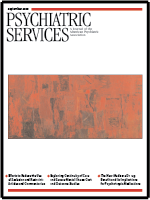Cognitive Behavioral Theories of Counseling: Traditional and Nontraditional Approaches
Marty Sapp, the author of Cognitive Behavioral Theories of Counseling: Traditional and Nontraditional Approaches, is a professor in the department of educational psychology at the University of Wisconsin-Milwaukee. His book is interesting because it bridges the gap between traditional or mainstream counseling interventions to less mainstream behavioral techniques. It allows those who have had some exposure to the more conventional psychotherapeutic techniques to expand their knowledge and skills into new cognitive-behavioral arenas.
In this age of evidence-based practice, it is fitting that the book begins with two chapters dedicated to reviewing the statistical and epidemiologic bases for evaluating and comparing psychotherapeutic treatments. A meta-analysis of the relative effect size of each of the therapies described in the book are presented, which allows for a comparison among treatments. On the basis of this meta-analysis, the author determines that the biggest effect sizes are found for treatments such as Beck's cognitive-behavioral therapy, hypnotherapy, and modeling. The nontraditional and less mainstream therapies, such as Adlerian psychotherapy and transactional analysis, have smaller effect sizes. Treatments such as short-term dynamic psychotherapy and reality therapy do not appear to be efficacious at all.
Throughout the book Sapp shows how behaviorism broke away from a more dynamic approach, beginning with Adler and his break from Freud. He goes on to place each of the traditions of cognitive-behavioral therapy into historical context, giving information about their developers. Also included is a structured presentation of each of the new therapeutic techniques. Techniques or schools presented include behavior therapy, family and social learning theories, rational emotive behavior therapy, personal constructs psychotherapy, transactional analysis, and reality therapy.
Further demonstration of the techniques is provided by client interviews. Each chapter has a glossary of key terms and review questions. Some chapters include contact information for the specialty society associated with the technique. The book's references provide a useful starting point for getting more information about a particular therapy. Overall the book is easy to read and provides clear explanations of terms and techniques.
Cognitive Behavioral Theories of Counseling would be useful as a foundation textbook for a survey course on cognitive-behavioral theories, particularly if supplemented by readings from the primary literature. Specifically, the book would be useful for psychologists, psychiatrists, nurse practitioners, social workers, counselors, and others in training who need a strong foundation in psychotherapy and would like to add new formulations and techniques to their repertoire.
Dr. Matthews is a resident in psychiatry at Oregon Health and Science University in Portland.



